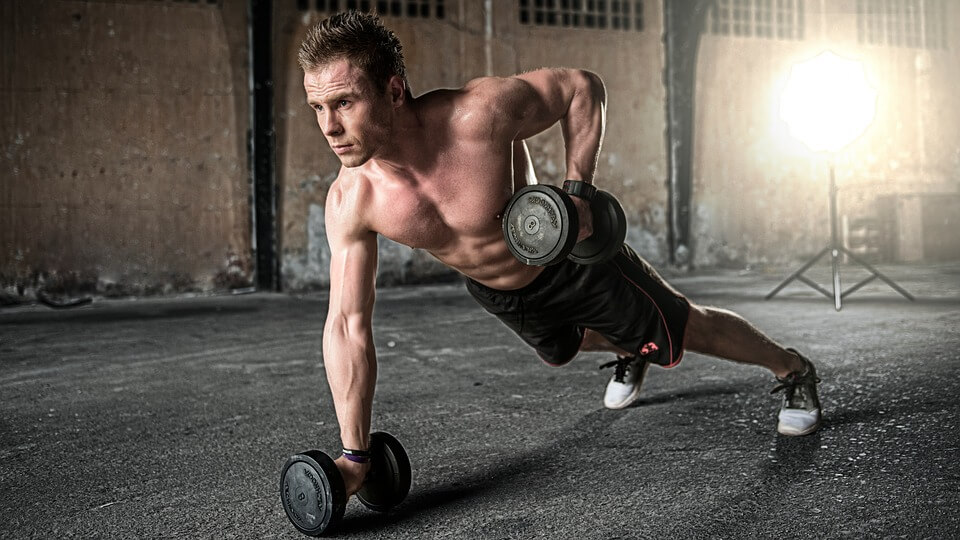Cross Training Shoes vs. Running Shoes – What’s the Difference?
When it comes to choosing workout shoes, you have two main choices – cross training shoes and running shoes.
Both look similar, but knowing the difference between running and cross training shoes is important.
The shoes you wear can have a big impact on your workout. Not only will the right shoes be more comfortable, they’ll help you train harder, perform better, and even have fewer injuries.
Cross training vs. running shoes – what’s the difference?
In this article, you are going to find out! We’ll also reveal some of the best shoes for running and cross training.
Contents
Running Shoes
The easiest way to decide which type of shoes is right for you is by examining the difference between running and cross training shoes.
Let’s start with running shoes…
As their name suggests, running shoes are designed for running. You can use them for other types of exercise, and they look good paired with jeans for that casual look, but running shoes are made for runners and running.
Running is a high impact activity. When you run, your feet hit the floor with three-times your bodyweight. This means that running shoes are designed to be very shock absorbent.
Without this sponginess, all that impact could result in injury. That’s one of the main reasons that running shoes have a built-up heel.
They are also supportive and you can choose running shoes according to your running style. For example, if your feet roll inwards, called pronation, there are shoes that can help correct this.
There are also shoes specifically for people whose feet roll outward, who have flat arches, or who run with a pronounced heel strike. In short, running shoes can help fix any foot fall issues that might otherwise cause you injury.
Running shoes are also very light. After all, who wants to carry extra weight when they are running?
Any extra weight would soon make you tired, and running is hard enough already!
If you are a regular runner, and especially if you run outdoors, your best shoe choice is running shoes. They offer everything you need for comfortable training, and may even prevent you from suffering running related injuries.
Running shoe feature summary
- Light
- Supportive
- Designed for heel-toe action
- Supportive
- Can correct footfall issues
Can you use running shoes for cross training?
Because they are light, comfortable, supportive, and cushioned, running shoes look like they might be perfect for cross training too.
But, before you lace up your runners and hit the gym, stop and reconsider!
Cross training involves a wide variety of training activities – from jumping to lifting weights to riding a bike to circuit training.
While you could use running shoes for all these activities, they might not be your best choice.
For starters, all that cushioning can mean that your running shoes will compress when you are lifting weights. This can make you unstable – not a good thing when you are under heavy iron.
Running shoes are also designed for forward movement, and not side to side movement. If your workouts involve a lot of side to side movements, such as agility exercises or group exercise classes, your running shoes may not be up to the task.
Finally, consider that running shoes are only really good for about 500 miles of running. After that, they start to lose some of their cushioning and support.
Cross training in your running shoes will make them wear out faster.
Not sure which running shoes are right for you?
I won’t give you 4 specific models that I would subjectively think as the best running shoes, rather I’ll give you a list of already existing content on GGP about running shoes.
Check out which article best suits your feet (e.g., you’re an underpronator) and go to that specific article which will give you loads of options to pick from as well as more information on those shoes for your feet.
Cross Training Shoes
Cross training shoes are designed to cope with a wide range of activities. They have some of the characteristics of running shoes, but they also offer a whole lot more.
If running shoes are track racing cars, cross trainers are off-road SUVs!
Cross trainers tend to be a bit more rugged, provide less shock absorption, and offer more lateral support so that, when you do side to side movements, your feet secure.
Where running shoes are built for landing on your heels, cross trainers are more cushioned in the forefoot. This means they protect your feet when you land more on your toes, jumping rope and sprinting for example.
Because they are firmer, cross trainers are perfect for weight training.
Where a running shoe would compress and collapse under heavy weight, cross trainers will not. That’s good news if you like to do exercises like squats and deadlifts where a squishy shoe would make an already hard exercise even harder!
The material used for cross trainers is also different and is usually stronger than the material used for running shoes.
This makes them more hardwearing. That’s good news because cross training can be tough on your shoes.
Jumping, cycling, lifting weights, and playing sports means your shoes can take a real hammering, and running shoes can’t cope with all that wear and tear. Because they are made from tougher material, and cushioning is not such a big feature, cross trainers tend to be longer lasting. That’s good news if you are on a tighter budget.
On the downside, this increase in toughness comes at a price – extra weight.
That’s not a big issue during a cross training workout, but that extra weight is another reason that running shoes are your best choice if running is more your thing.
Cross training shoe feature summary
Check out our TOP 24 CrossFit shoes for men and TOP 25 CrossFit shoes for women.
- Sturdy and hardwearing
- Designed for forefoot landings
- Stable and supportive
- Made for side to side activities
- Heavier
Can you use cross trainers for running?
While you can run in cross trainers, they are only really suitable for short, occasional runs, or for use during a warm up or cool down.
They do not have the cushioning you need for longer or more frequent runs. They are fine for walking, but running long distances in cross trainers is not recommended.
If your training involves lots of different activities such are cardio, strength training, group exercise classes, and maybe sports like basketball or tennis, cross trainers are the right shoe for you.
Cross Training shoes vs. Running Shoes – What’s the Difference?
Running shoes and cross trainers might look similar, but they are actually totally different. If you are serious about your workouts, you should be serious about your choice of shoes too, and buy the right shoes for the job.
After all, you want the best shoes for running and cross training, right?
If you run regularly, run long distances, or tend to run outdoors rather than on a treadmill, it’s running shoes you need.
Light, supportive, corrective, and cushioned, running shoes will cradle your feet for a comfortable, safe workout.
However, if your workout is usually gym-based, and involves things like lifting weights, jumping rope, cycling, and just a small amount of running, cross training shoes are your best choice.
They’ll provide you with the cushioning and support you need, but will be able to cope with the demands of your workout much more easily.
But I Run AND Cross Train – What Should I do?
If you do a lot of different types of training, and you can afford it, the best option is to buy running shoes and cross trainers, wearing different shoes for each type of workout.
This might seem like an unnecessary expense but might actually end up saving you money because your running shoes will last longer, and you’ll get fewer running-related injuries so less money on doctor’s bills!
Summary
Cross training shoes vs. Running shoes – what’s the difference? Now you know, and you should have no problem choosing the right shoes for your workouts.
Remember, if you are a regular runner, then running shoes are best for you. But, if your training involves lots of different types of workout, cross trainers are what you need.



